Los Angeles’s homelessness crisis visualized
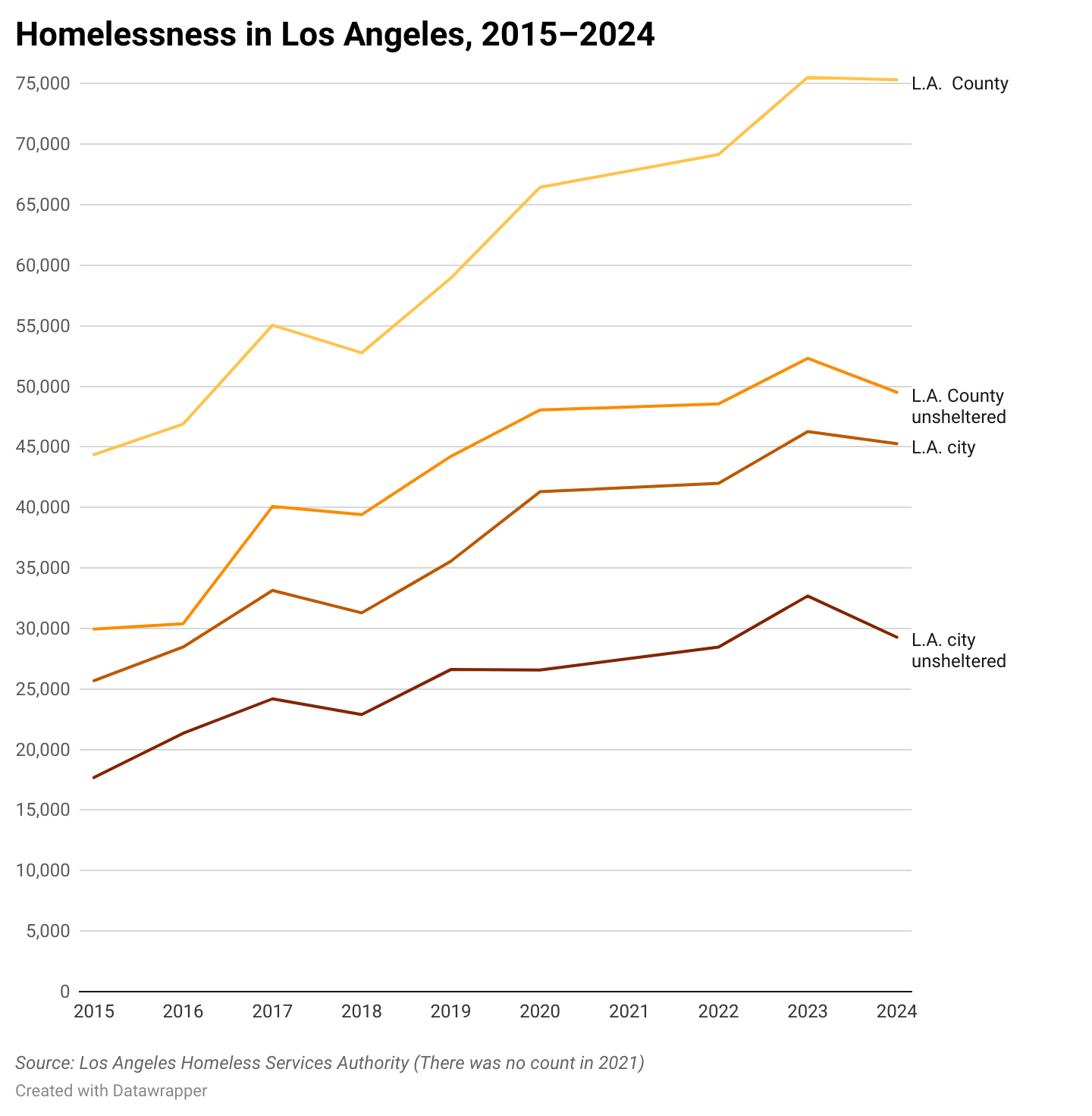
For the first time in six years, Los Angeles was able to notch a small improvement in homelessness, as an array of county and city programs to move people off the streets and indoors began to make an impact.
Homelessness remains the region’s most glaring humanitarian crisis. The Los Angeles Homeless Services Authority reported a drop of 0.3% countywide in its annual count (which takes place each January). The 2024 total of 75,312 is roughly the entire population of Upland.
In the past, progress has been fleeting. A drop in numbers in 2018 from the previous year was followed by a 43% increase countywide over the next six years. That steady rise added to the sense of inevitability around the crisis. In 2023 LAHSA recorded a 9% increase in the county and a 10% jump in the city.
Los Angeles Mayor Karen Bass insisted that this year’s incremental drop is proof that collaboration between the myriad agencies and groups that work on the problem can reverse the tide. “For so many years, the count has shown increases in homelessness, and we have all felt that in our neighborhoods. But we leaned into change. And we have changed the trajectory of this crisis and have moved L.A. in a new direction,” she said in a statement.
Who are the unhoused?
Homelessness afflicts every age and ethnic group. But the impact falls disproportionately on Black people in Los Angeles County, who represent roughly 8% of the entire population but 33% of those unhoused.
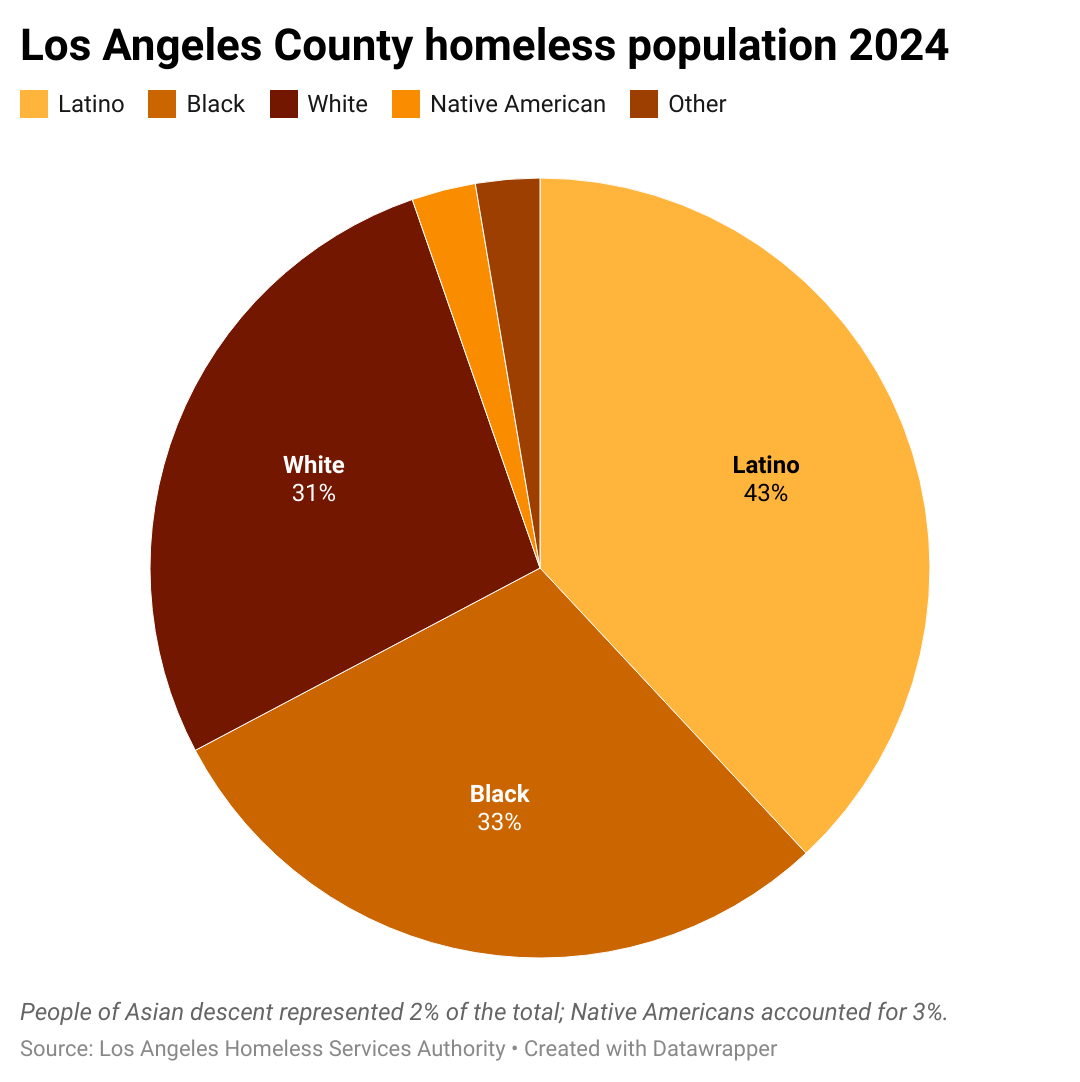
According to the count, there were 6,277 minors experiencing homelessness and 5,903 senior citizens. Some 27% of those unhoused reported having a substance abuse disorder and 24% suffered from a serious mental illness, while 22% had a physical disability.
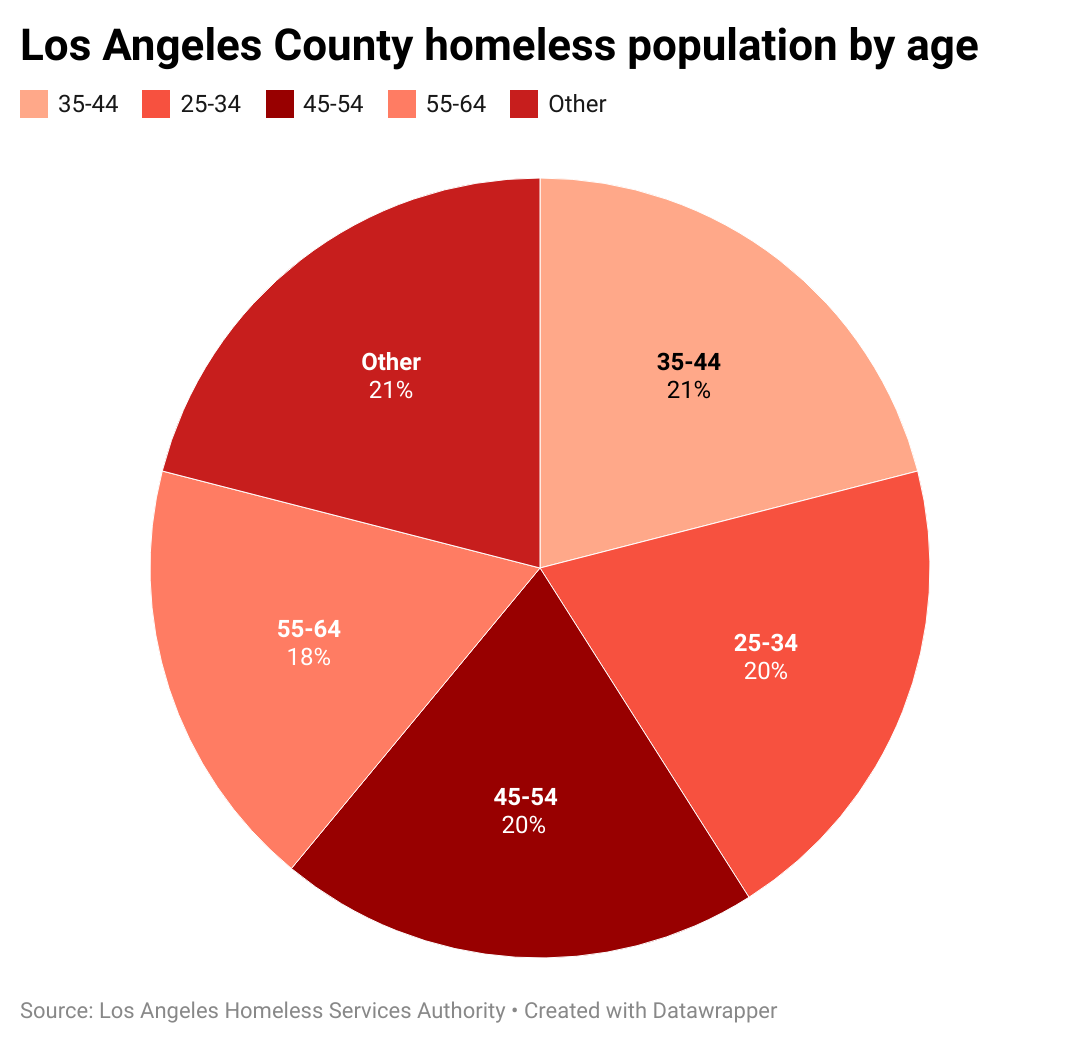
It’s all about the rent
The homelessness crisis is, at its root, a housing crisis. Southern California has faced a widening imbalance of demand versus supply of housing for decades. In just the city of Los Angeles, the goal is to create almost half a million new homes by 2030, according to its Plan to House LA.
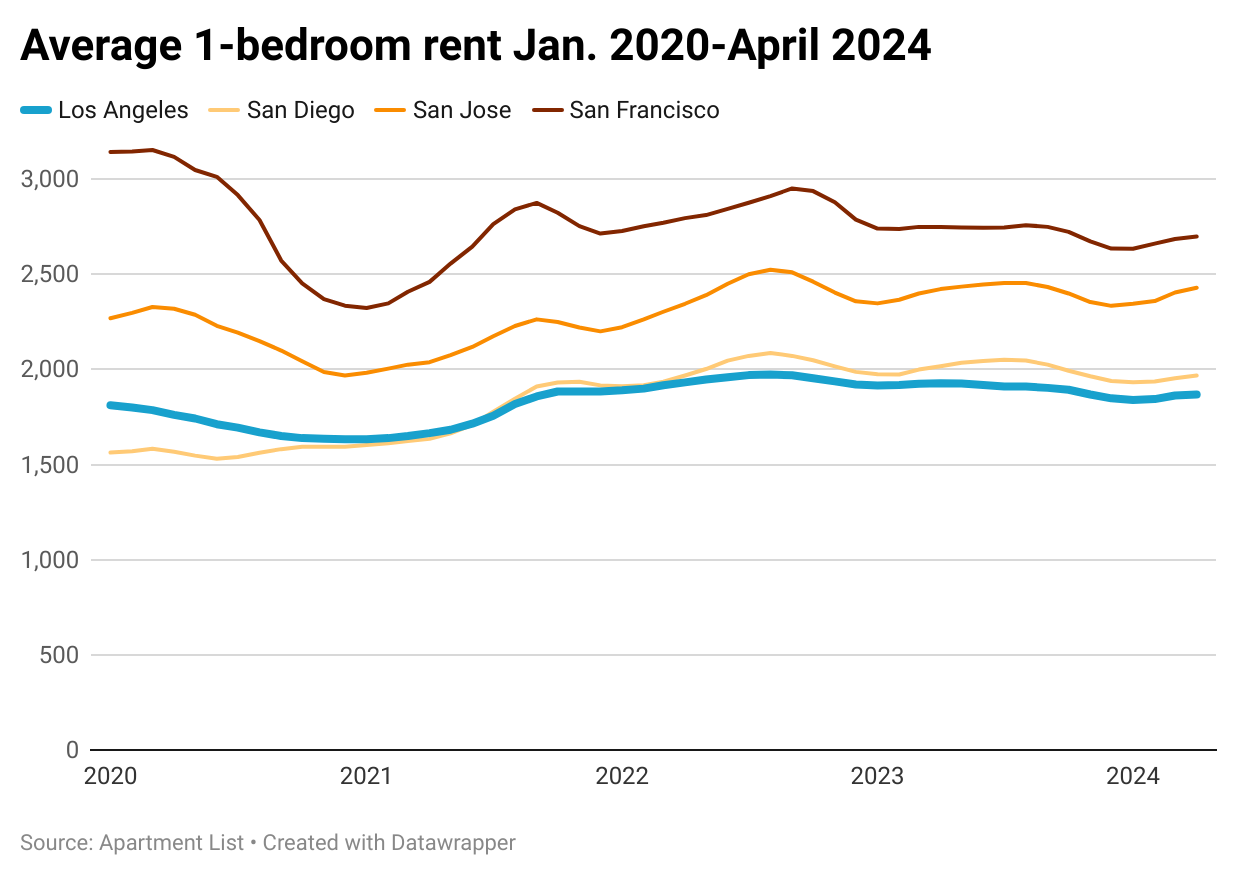
The higher the rent, the more frequently people are pushed into homelessness, and during the presentation of the report Friday morning, LAHSA Chief Executive Dr. Va Lecia Adams Kellum stated, “Rents continue to be too high for far too many people.” The pandemic, during which many people left the region, led to a brief respite but didn’t meaningfully make housing more affordable.
Increasing the supply of housing should, in theory, lead to lower prices. But the pace of new construction in the city of Los Angeles has been waning. As new housing developments often take more than a year to complete, this slowdown does not bode well for the city’s goal of ramping up housing supply. Bass has sought to combat this in part with an emergency directive to speed up the approvals of low-income and affordable housing projects.
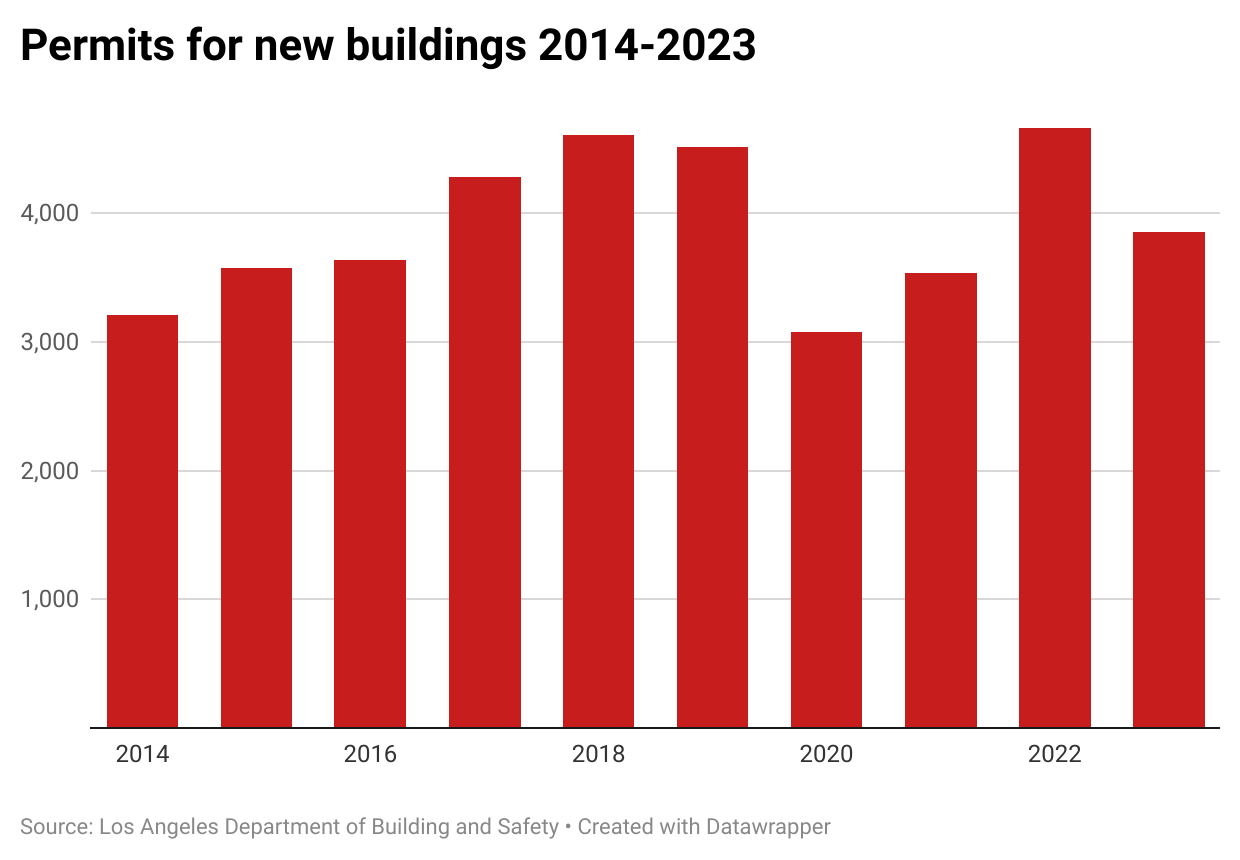
Daniel Flaming, president of the Economic Roundtable, a Los Angeles-based think tank, emphasized that one of the biggest drivers of homelessness is lack of access to employment. “It’s important that we see this as an income problem and not just a housing problem. We must make stronger efforts to employ people and for people for whom a job is not a feasible option, we must provide a basic income,” he said.
There is a limited supply of temporary shelter, and in order to maintain the current momentum the city and county need to more quickly move people into permanent housing. “It’s about having an exit plan for temporary housing. We need to free up those rooms and a job is a pretty good exit strategy,” he said.
Dwindling patience
Residents of Los Angeles have no easy options to address the problem in their communities. And the level of frustration has been building. Angelenos contacted the city’s MyLA311 service to complain about encampments more than 72,000 times last year. Those calls don’t do much to address the root cause. Enough of them, however, might prompt the Department of Sanitation to initiate a cleanup.
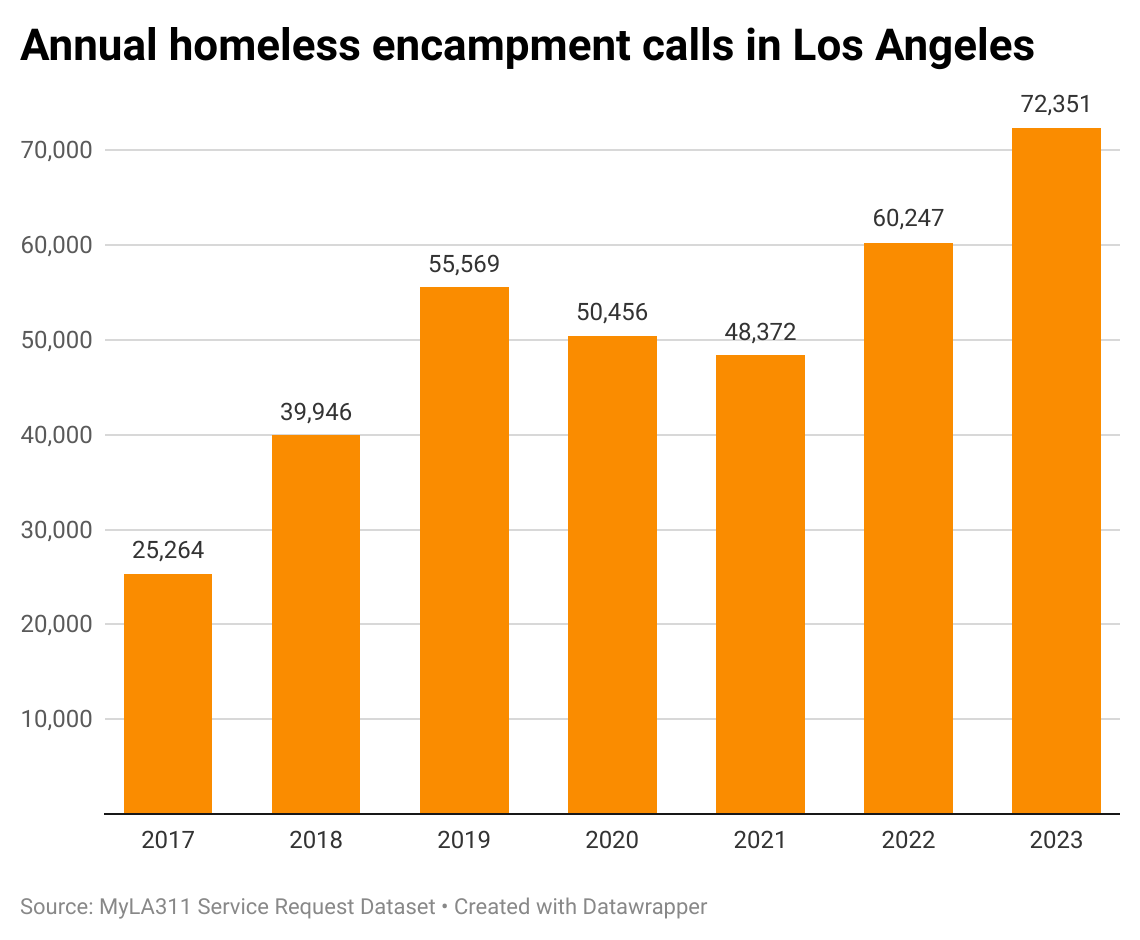
Bass initiated Inside Safe shortly after taking office, and it has become the focal point of her effort to address tent encampments across the city. It has been utilized at more than 50 sites in all 15 council districts, with outreach workers seeking to persuade inhabitants of a camp to move into a hotel or motel, which hopefully is the first step on the path to permanent housing. The Inside Safe website says the program has brought more than 2,800 people indoors, though critics question the cost and how many individuals return to the streets.
Each operation, however, is labor intensive and costly. Earlier this week, Bass announced an Inside Safe action in Hollywood that brought 20 people from an encampment off the streets. Getting the Inside Safe participants into permanent housing has been even slower.
Homelessness and crime
Unhoused people are far more likely to be both victims and suspects of crimes than the general population, though the numbers have fallen slightly in recent years.
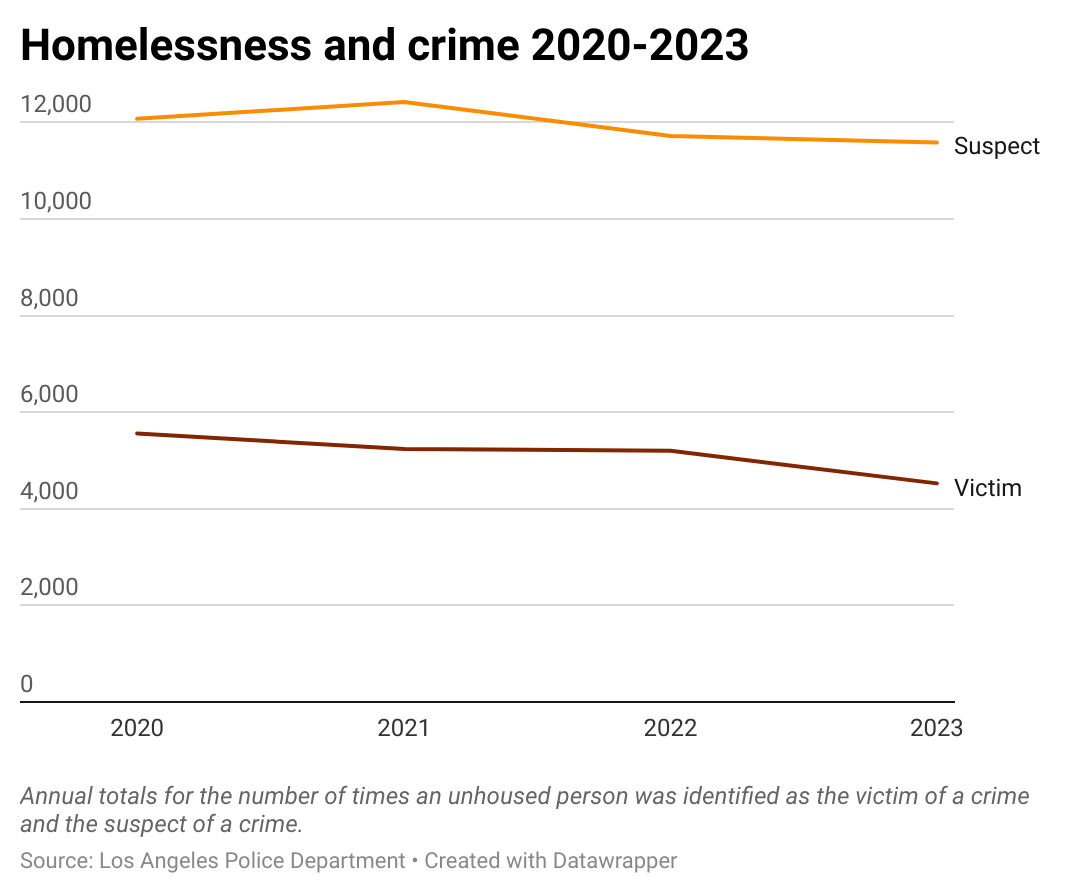
While homelessness is an eyesore to many, it can be deadly to those living on the streets. Crosstown in May wrote about a report from the Los Angeles County Department of Public Health that found a 7.8% increase in deaths among people experiencing homelessness in 2022 (the most recent year for which data is available). The 2,374 fatalities, many attributable to drug and alcohol overdoses, was more than double the count in 2018.
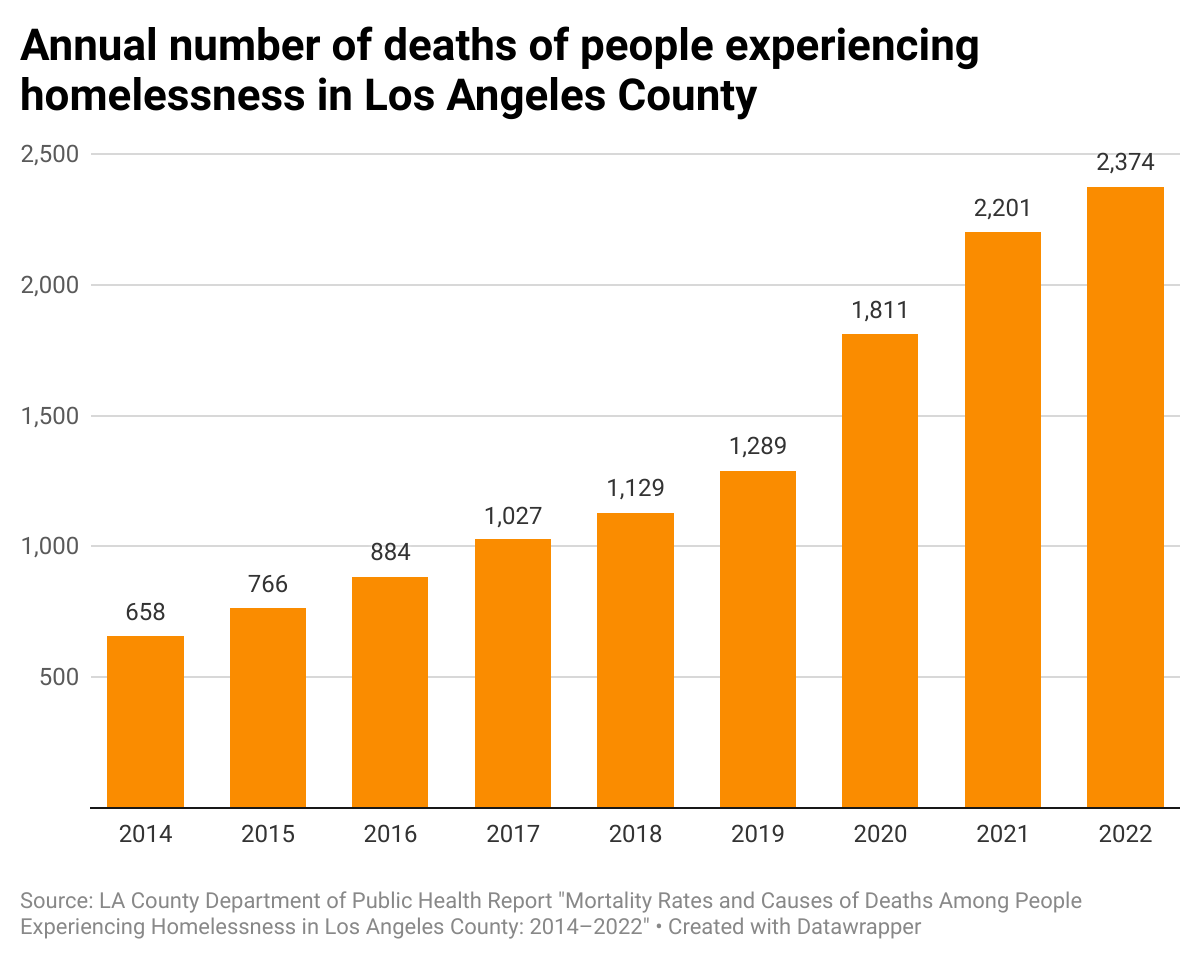
How we did it: We examined publicly available data from LAHSA, the Los Angeles Police Department and MyLA311 from 2015 onward. The rent data comes from Apartment List. Data on building permits comes from the Los Angeles Department of Building and Safety. Have questions about our data? Write to us at askus@xtown.la






